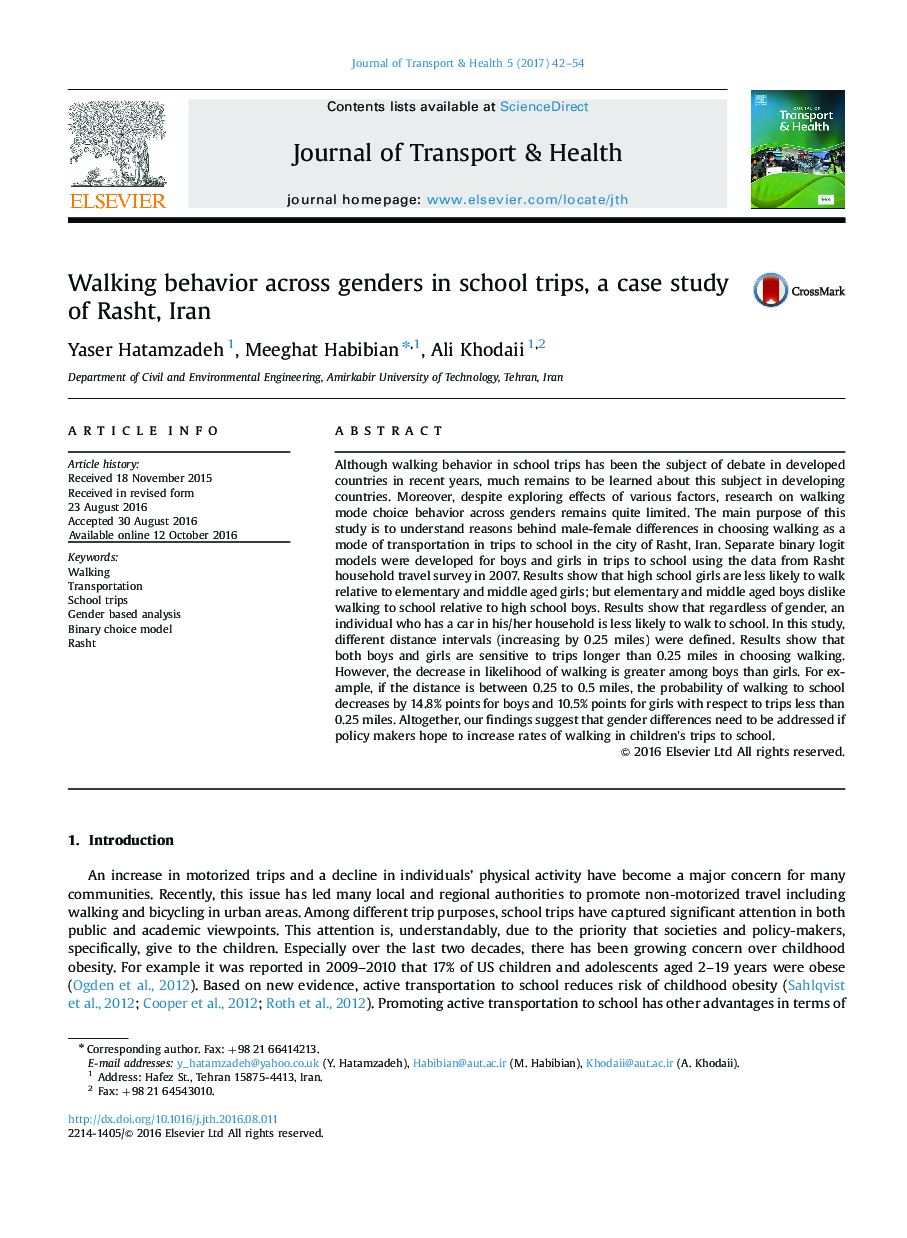| کد مقاله | کد نشریه | سال انتشار | مقاله انگلیسی | نسخه تمام متن |
|---|---|---|---|---|
| 5117834 | 1485456 | 2017 | 13 صفحه PDF | دانلود رایگان |
- Walking behavior across genders for trips to school is modeled.
- The effect of various factors on walking behavior of boys and girls are different.
- A car in a household discourages walking to school.
- Travel distance diversely affects walking mode choice of boys and girls.
- Making trips on afternoon has been found effective on boys' decision to walk.
Although walking behavior in school trips has been the subject of debate in developed countries in recent years, much remains to be learned about this subject in developing countries. Moreover, despite exploring effects of various factors, research on walking mode choice behavior across genders remains quite limited. The main purpose of this study is to understand reasons behind male-female differences in choosing walking as a mode of transportation in trips to school in the city of Rasht, Iran. Separate binary logit models were developed for boys and girls in trips to school using the data from Rasht household travel survey in 2007. Results show that high school girls are less likely to walk relative to elementary and middle aged girls; but elementary and middle aged boys dislike walking to school relative to high school boys. Results show that regardless of gender, an individual who has a car in his/her household is less likely to walk to school. In this study, different distance intervals (increasing by 0.25 miles) were defined. Results show that both boys and girls are sensitive to trips longer than 0.25 miles in choosing walking. However, the decrease in likelihood of walking is greater among boys than girls. For example, if the distance is between 0.25 to 0.5 miles, the probability of walking to school decreases by 14.8% points for boys and 10.5% points for girls with respect to trips less than 0.25 miles. Altogether, our findings suggest that gender differences need to be addressed if policy makers hope to increase rates of walking in children׳s trips to school.
Journal: Journal of Transport & Health - Volume 5, June 2017, Pages 42-54
